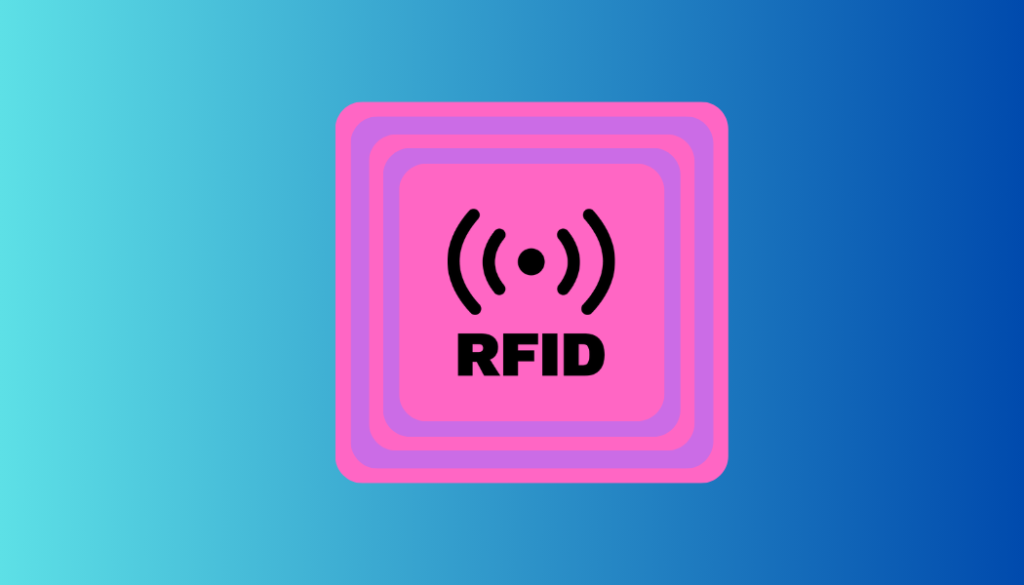In today’s tech-savvy world, where convenience often comes hand in hand with potential risks, it’s crucial to understand concepts like RFID blocking. So, what exactly is RFID blocking and why should you care? Let’s dive in and uncover the ins and outs of this technology.

Exploring the World of RFID
RFID (radio-frequency identification) is a nifty wireless technology that utilizes radio waves to identify and track various objects. Picture it like this: RFID tags are these tiny electronic minions attached to or embedded within objects. They carry a chip and an antenna, allowing them to store and transmit data. Now, enter RFID readers—they’re the ones who can tap into the data on these tags from a short distance away. But here’s the kicker: if these RFID tags aren’t properly safeguarded, they can be sneakily scanned by an RFID reader without your knowledge or consent.
How is RFID Used in Everyday Life?
You’d be amazed at how deeply integrated RFID technology is in our daily routines. From our wallets to our workplaces, it’s practically everywhere:
- Debit and credit cards: Those sleek cards in your wallet? Yep, many of them boast RFID tags for convenient contactless payments.
- Passports: Ever noticed the chip in your passport? That’s RFID technology, working its magic to store crucial information and enhance security.
- Car key fobs: Say hello to keyless entry and ignition, all thanks to RFID tech linking your key fob to your car’s security system.
- Inventory management: Retailers use RFID tags to keep tabs on their stock, from car parts to sneakers.
- Theft prevention: RFID tags can set off alarms if someone tries to walk off with a tagged item without paying.
- Retail experiences: Ever marveled at Amazon’s checkout-less stores? You can thank RFID tags for that seamless payment process.
- Employee and student identification: RFID-tagged badges help with everything from clocking in at work to tracking attendance at school.
What Exactly is an RFID Blocker?
Now, let’s talk solutions. Enter the hero of the story: the RFID blocker. Simply put, an RFID blocker is any device or material that puts the brakes on RFID signals. These can come in various forms, from wallets to stickers, and they work by creating a protective shield around RFID tags.
How Does an RFID Blocker Work?
Imagine a force field around your RFID tag—that’s essentially what an RFID blocker creates. It’s like slipping your credit card into a protective bubble that shields it from prying RFID readers.
Examples of RFID-Blocking Tech
The market is teeming with RFID-blocking goodies, including:
- Wallets
- Sleeves for credit cards and passports
- Backpacks and purses
- Stickers
- Cards
You can even fashion your own DIY RFID blocker using aluminum foil—talk about innovation!
Is RFID Blocking Really Necessary?
Ah, the million-dollar question. While RFID blocking can offer peace of mind, it might not always be a necessity. Here’s the lowdown:
- For credit card skimming: The risk is low, and there are more efficient ways for cyber-criminals to get their hands on your data.
- For passport protection: Security features are already built-in, making RFID skimming less of a concern.
However, there’s one scenario where RFID blocking shines: car key fobs. These little buggers are susceptible to relay attacks, where thieves amplify the signal to gain access to your vehicle. In such cases, an RFID-blocking solution could be a game-changer.
Should You Steer Clear of RFID?
RFID itself isn’t inherently harmful, but it’s how it’s used that matters. While you may not be able to dodge RFID entirely, you can take steps to safeguard your privacy:
- Monitor your transactions
- Remove RFID tags when no longer needed
- Stay informed about RFID usage in your workplace or school
Remember, knowledge is power!
So, there you have it—the lowdown on RFID blocking. While it may not be a necessity for everyone, it’s certainly worth considering, especially if you’re keen on safeguarding your digital footprint.
FAQs
1. Does RFID blocking really work?
Yes, when used correctly, RFID blocking can effectively thwart attempts to read RFID signals.
2. Can RFID tags track your location?
Indeed, RFID tags have the potential to track your whereabouts, although it’s usually with your knowledge or consent.
3. Should I avoid using RFID altogether?
Not necessarily. While there are privacy concerns, RFID technology is deeply ingrained in modern life. Instead, focus on mitigating risks where possible.
4. What do RFID tags look like?
They come in various shapes and sizes, often appearing as small, flat stickers or embedded within devices like key fobs.
5. Is it necessary to use RFID-blocking tech?
It depends on your level of concern and specific use cases. For added security, especially with car key fobs, RFID-blocking solutions can offer peace of mind.
Bypass limit PD proxy
To bypass limits with PD proxy, you can utilize ForestVPN’s secure and high-speed servers. By connecting to ForestVPN, you can overcome restrictions and enjoy unrestricted access to your desired content. ForestVPN ensures your online activities remain private and secure, offering a seamless browsing experience. Don’t let limitations hold you back; try ForestVPN today for unrestricted internet access. Visit ForestVPN to get started.


